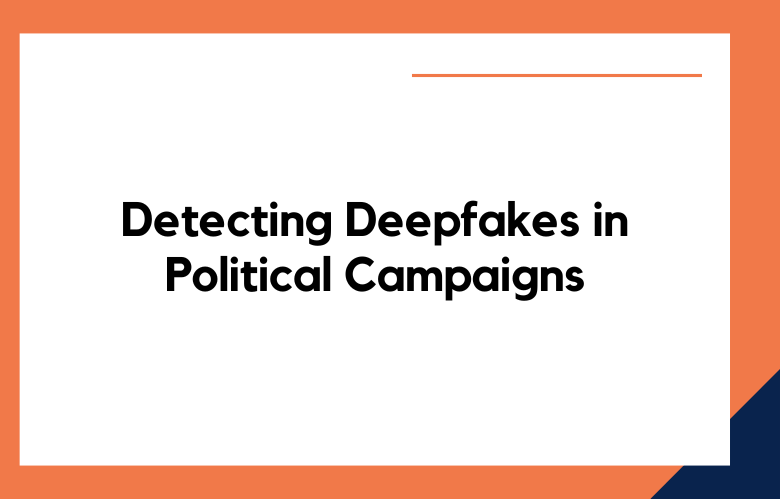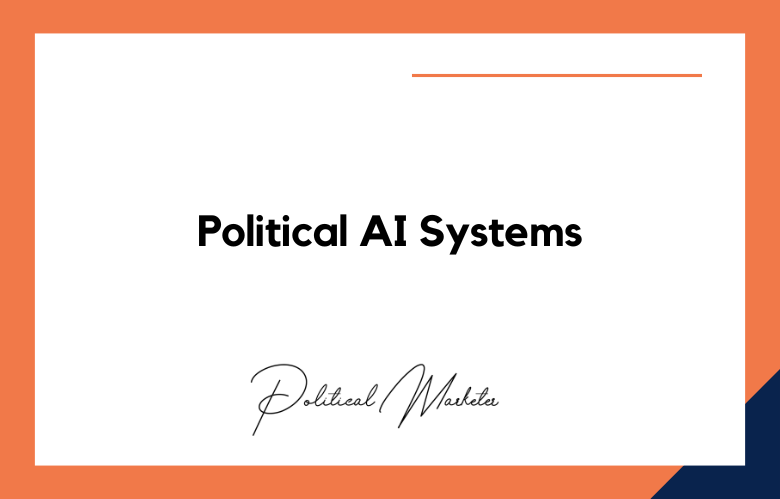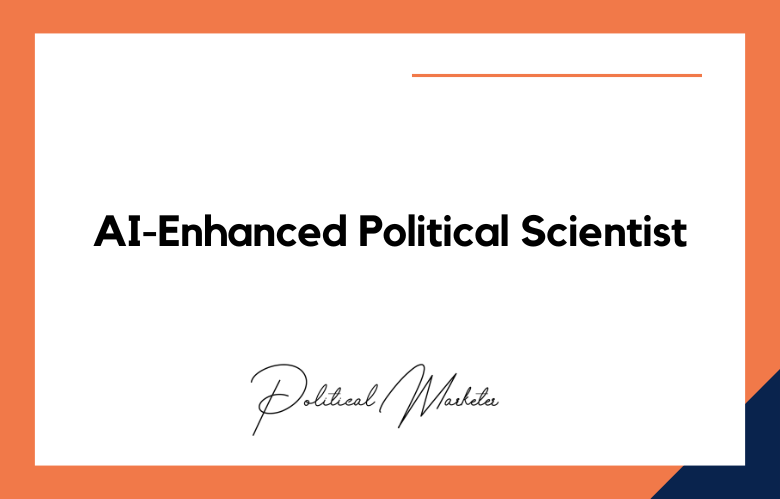With the ever-increasing advancement in artificial intelligence and machine learning, deepfakes have become a standard tool for deceiving the public, particularly in political campaigns. A deepfake is a manipulated video or audio that appears natural, thus spreading false narratives and creating confusion. In politics, deepfakes can be used to promote misinformation, sway public opinion, and damage opponents’ reputations. We will explore the challenges of detecting deepfakes and preventing their spread in political campaigns.
Deepfakes, a form of manipulated media that uses artificial intelligence techniques to replace a person’s likeness in a video with someone else’s or create entirely new videos with fabricated content, pose a unique threat to electoral integrity.
Deepfakes have already been used with damaging effects in several political campaigns worldwide.
Unmasking the Threat: Why Deepfakes Pose a Major Challenge in Political Campaigns
Artificial intelligence (AI) advances have created incredibly realistic deepfakes as the world increasingly digitizes.
Machine learning algorithms manipulate these videos, images, and audio recordings to convincingly distort reality. They often substitute existing content or create entirely new but manipulated scenes.
The ability to generate authentic-looking material has raised serious concerns, particularly in politics. Deepfakes have the potential to weaponize misinformation campaigns and disrupt political campaigns, creating massive damage to candidates’ reputations, characters, and electoral processes.
In recent years, deepfakes have been used to spread lies by altering videos of political candidates, creating manipulated quotes, or altering speeches to misrepresent individuals using these platforms.
The Cat and Mouse Game: How Deepfake Technology Evolves and Challenges Campaign Security
In recent years, the emergence of deepfake technology has sparked concerns about its potential impact on campaign security.
This technology’s sophisticated capabilities can create hyper-realistic replicas of individuals in real time, making it almost impossible to distinguish between reality and falsity. This has prompted lawmakers, politicians, and security experts to ramp up their efforts against this looming threat.
The Cat-and-Mouse Game has begun, as security teams work tirelessly to stay ahead of those using deepfakes to disrupt campaigns.
With the latest developments in AI and machine-learning algorithms, cyber-criminals can create compelling videos that can easily deceive the general public. Such videos can be used to spread misinformation, defame candidates, or even cause chaos during the campaign season.
The Politics of Deception: Exploring the Impact of Deepfakes on Electoral Campaigns
The rise of deepfakes, which involves using artificial intelligence and machine learning to create realistic videos or images of people saying or doing things they never did, has caused significant concern in the political sphere.
The potential harm that deepfakes could cause to electoral campaigns is not merely hypothetical; examples of deepfakes targeting politicians have already emerged around the globe, including in the United States and France.
One of the biggest concerns of deepfakes is that they could be used to spread false information and discredit politicians. For instance, a deepfake could falsely depict a politician making promises they never intended to keep or engaging in illegal activities.
As deepfakes become increasingly sophisticated, it is becoming increasingly difficult to distinguish real from fake, making it easier to spread false information and sow distrust in the political process among citizens.
Detecting the Invisible: The Technological Barriers in Uncovering Deepfake Videos
With the advent of advanced video editing techniques and artificial intelligence, deepfake videos have become a significant threat to society. These videos are manipulated, and their content is artificially generated, which makes them undetectable by the human eye.
The rise of deepfake videos has become a grave concern as they can be used to misinform, confuse, and malign individuals or groups. Therefore, developing a system to detect deepfake videos is of utmost importance.
However, detecting deepfake videos is challenging and requires specialized technological expertise. Deepfakes are created by using machine learning algorithms that are trained on massive datasets of images and videos.
These algorithms use generative models to create fake videos that are difficult to distinguish from the real ones. To further complicate matters, creators of deepfake videos use advanced techniques such as facial reenactment, lip-syncing, and voice synthesis, making it nearly impossible to detect them.
Beyond Faceswapping: Understanding the Multi-layered Challenges of Deepfake Detection
Definition of Deepfakes
Deepfakes are computer-generated videos or images manipulated using artificial intelligence (AI) to make it appear that someone said or did something they didn’t.
These deepfakes can be used maliciously to spread false information, manipulate public opinion, and even damage reputations. As such, it is essential to understand the challenges associated with detecting these deepfakes to protect against them.
Technical Challenges
One of the primary challenges associated with deepfake detection is the technical complexity involved in creating a deepfake.
Deepfakes require sophisticated AI algorithms and techniques to produce realistic results, making it difficult for traditional detection methods to identify them accurately. Deepfakes can constantly evolve as technology advances, further complicating detection efforts.
Legal Challenges
Another challenge associated with deepfake detection is the legal landscape surrounding them. Many countries do not have laws explicitly addressing deepfakes, making it difficult for law enforcement agencies to take action against those responsible for creating them.
Many countries have laws that protect free speech and expression, which could limit the ability of law enforcement agencies to prosecute individuals who create or share deepfakes.
Social Challenges
The social implications of deepfakes also present a challenge when detecting them.
Malicious actors can use deepfakes to spread false information or manipulate public opinion on various issues, making it difficult for people to distinguish between real and fake content online.
This can lead people to distrust news sources and other digital content, further complicating the detection and removal of deepfakes from circulation.
Ethical Challenges
Ethical considerations are associated with detecting and removing deepfakes from circulation.
While some may argue that removing these types of content is necessary to protect against malicious actors spreading false information or manipulating public opinion, others may say that this could lead to censorship and limit freedom of expression online and offline.
Therefore, it is important for organizations working on developing technologies for detecting and removing deepfakes from circulation to consider these ethical implications before taking action against them.
Defending Democracy: Strategies for Preventing Deepfake Disinformation in Political Campaigns
Deepfake technology enables the creation realistic-looking audio, video, and images that can be manipulated to spread false information and deceive viewers.
As political campaigns become increasingly digitized, deepfakes have emerged as a significant threat to the integrity of democratic systems. To prevent this manipulation, politicians and their teams must implement strategies to help limit the spread of deepfake disinformation during political campaigns.
One strategy for defending democracy is to increase awareness and education about deepfake technology. This can be achieved through public campaigns highlighting the risks and consequences of spreading deepfake disinformation.
Educating the public on identifying deepfakes makes people less susceptible to this type of manipulation. Politicians and the media can work together to promote accurate, verifiable information, which can help to dispel deepfake disinformation.
Trust at Stake: Examining the Social Consequences of Deepfake Manipulation in Elections
With the rise of deepfake technology, trust in political elections is at stake. Deepfakes are manipulative videos or images that are created using artificial intelligence. They are designed to appear authentic but are altered to deceive viewers.
The use of deepfakes in political campaigning has been identified as a growing threat to democracy. The impact of deepfake manipulation on an election’s social consequences cannot be overstated.
Deepfake manipulation can give the impression that a candidate has said or done something they have not, which can significantly influence voter perception.
Deepfakes can be used to create false information, spread propaganda, and manipulate public opinion. In the context of election campaigns, deepfakes can disseminate fake news or smear campaigns that sway voters towards or against a particular candidate.
Battling the Fake News Invasion: Countering Deepfakes in Political Campaigns
The increasing prevalence of fake news, particularly in political campaigns, has become a severe concern in recent years. However, the emergence of deepfakes has intensified this problem significantly.
Deepfakes are manipulated audio and video recordings created to look and sound natural but entirely fabricated.
The potential impact of deepfakes on political campaigns is particularly problematic, as they can sway public opinion and cast doubt on the authenticity of legitimate news sources.
A range of technological and policy solutions are being explored to counter the threat of deepfakes in political campaigns.
One potential tool is the development of advanced detection algorithms that can identify deepfakes with high levels of accuracy.
Research into this area is already advanced, with some experts suggesting that deepfake detection tools may soon become sophisticated enough to identify even the most convincing examples.
Breaking the Illusion: Unveiling Methods to Detect and Debunk Deepfakes in Politics
In recent years, the use of deepfake technology to create convincing yet entirely fabricated videos has become a growing concern in politics.
Deepfakes can be created by using artificial intelligence algorithms to swap a person’s face onto another person’s body and can be used to spread false information or manipulate elections.
However, researchers and tech companies are working to develop methods to detect and debunk deepfakes. One common approach is to analyze a video’s facial movements to determine whether they are consistent with the person being depicted.
Another method is to look at the lighting and shadows in the image to see if they are consistent with the environment in which the video was supposedly filmed.
In addition, some companies are developing artificial intelligence programs that are trained to identify deepfakes. These programs can analyze thousands of data points within a video to determine its authenticity.
Conclusion
The battle against deepfakes is a complex issue requiring concerted efforts from various stakeholders. However, with advancements in AI technology, there is hope that deepfakes can be spotted and stopped more efficiently.
Awareness, media literacy, policies, technology, and accountability must all work together to combat fake news and misinformation. Ultimately, political campaigns that rely on deepfakes put the cornerstone of democracy at significant risk and ultimately undermine free and fair elections.
The challenges of detecting deepfakes and preventing their spread in political campaigns are complex and multi-faceted. To tackle this problem effectively, we need a combination of technological solutions, legal frameworks, media literacy campaigns, and changes to social media practices.
Innovations in machine learning, image forensics, and open-source technologies have the potential to identify deepfakes faster and more accurately. However, we also need legal frameworks that protect individual freedoms while upholding the integrity of electoral processes.
By working together to address these challenges, we can help ensure that political campaigns remain a space for honest debate and informed decision-making, free from manipulating bad actors.











